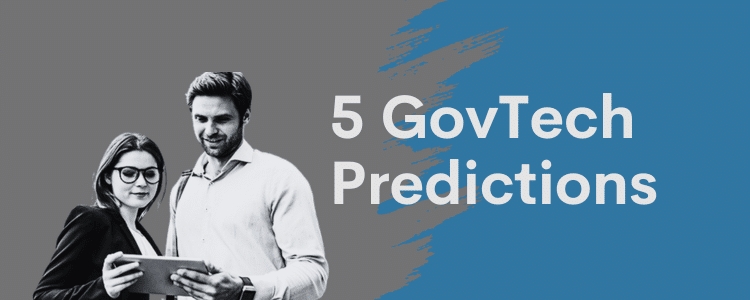The public sector is increasingly implementing emerging technologies, like artificial intelligence (AI), that have the potential to optimize operations and outreach. Collectively referred to as “GovTech,” these digital products are designed to relieve pain points across the full spectrum of public sector operations.
What are some of the most promising emerging technologies in the public sector? What predictions can we make for the future? Let’s take a look.
5 Promising Emerging Technologies in the Public Sector
1. Generative AI
ChatGPT is a recent example of generative AI that is continually improving upon its natural language processing (NLP) capabilities.
While it can be used across multiple sectors, generative AI is especially promising in government applications. As agencies and organizations continue to learn more about these algorithms and what they can do, it will drastically change the way governments interact with citizens.
At the same time, it could also transform how the public sector identifies and addresses societal problems, from hunger and homelessness to crime and poverty.
Potential AI Use Cases for the Public Sector
There are many ways AI can transform and improve government tech, from local government ERP software to tribal government health systems.
While there must be strict protocols in place to ensure it’s used ethically, AI can have substantial societal value. A few potential applications include:
- Enhancing citizen services: Answering FAQs, recommending services, and processing simple transactions
- Simplifying workflows for public sector employees: Easier internal collaboration, and fewer manual tasks
- Strengthening creative outputs: Quicker and easier writing of speeches, memos, outlines, guides, etc.
- Improving data analysis: Easier management of large segments of data, and stronger connections between topics and domains
2025 Top 10 Government ERP Systems
This independent report reveals what vendors our consultants most frequently consider for public sector clients. These vendors enable states, municipalities, and other public sector entities to be more data-driven.
2. The Internet of Things (IoT)
When we speak of emerging technology, there’s typically some mention of IoT. In short, this refers to the vast network of physical objects that are now interconnected thanks to digital tech.
While it’s widely employed across the private sector, it’s also present in the public sphere. Today’s GovTech uses sensors and processors to make important connections across the country.
For example, road sensors are helping control traffic, and smart meters are helping organizations save money on utilities.
At the same time, innovation is also happening on a smaller scale. Local governments are using IoT to become more efficient, lower costs, and even save lives. They’re installing sensors to alert residents and officials of dangers related to floods, earthquakes, traffic concerns, and more.
As these systems are fine-tuned, their applications could expand even deeper into other cities and communities.
3. Accessible Solutions for Community Programs and Education
GovTech also includes innovative technology designed to strengthen the cultural offerings of the public sector.
Museums, for instance, are becoming more accessible and adaptable thanks to immersive technologies that improve the patron experience. From aquariums to art galleries to visitor centers, organizations are finding ways to use digital technologies to engage curious minds from afar.
Some organizations are even finding ways to reach remote or underserved areas. By improving their digital infrastructure (devices, software, connectivity) as well as their human infrastructure (teachers, parents, administrators), they are slowly expanding their reach.
4. Technology for Improving Public Safety
There is also new GovTech aimed at strengthening community safety. Equipping first responders, police teams, and traffic controllers with the right tools is helping them do their jobs more efficiently than ever before.
Public sector employees are using these tools to gather data almost everywhere, from county jails to city parks. Leveraging real-time data insights, they are discovering what’s working and improving what’s not.
For example, they are reducing overcrowding in prisons, identifying high-risk neighborhoods, and performing routine inspections (e.g., pollution monitoring) more effectively.
Next Steps: Agree on a Digital Strategy
If you’re eyeing some of these government technology trends for your own organization, the first step is reaching a consensus around your digital strategy, especially in regard to cybersecurity. A united front dedicated to the citizen experience is essential to making the best use of emerging technologies in the public sector.
To learn more about how your public sector organization can achieve government ERP success, contact our enterprise software consultants below.














